|
Twenty days... I can't believe it's been so long. Fear not, I am still very much alive.
It's just been one of those months, there have been more canal boating trips, shows, club dyeing, my end of show season pot luck sale, and just general getting on with life. You know the sort of thing. The mundane stuff, nothing interesting, nothing news worthy, just general day to day happy living. A routine that make for a nice existence, but isn't actually all that fascinating, unless you happen to be a stalker, and as far as I'm aware I don't have one of those thank goodness. The chickens are just fine, though it turns out Dusty was just being slow to grow up and is actually a cockerel... Cockerel count is now at 5, Hen count at 8. The boys are for the most part behaving, Froome is definitely now in charge, Boyo acts like the sensible Grandfather and stays well out of it, and the 3 youngest ones are behaving like teenagers. They'll sort it all out eventually though, otherwise it's Coq Au Vin for tea! Gwen is having a lovely time trying to track down all the rodents in the garden. She's currently specialising in digging very large holes with no actual result... I first encountered pencil roving not long after I'd learned to knit, way back in 2009. At the time I used it to make a very nice tea cosy, that went to a new home as part of a swap. The photo of said cosy is utterly abysmal, it's in my Ravelry projects if you really want to see it! When I was browsing through the selection of new things available at one of my suppliers last spring I came across some more pencil roving. This time in something other than merino, and I remembered being told you could spin with it. After all, it is one of the final steps in commercial yarn production. I ordered a sample skein, because I sample everything before I release it in to the spinning wilds. I try out everything I sell, before I sell it, and usually send samples on to other people to try out as well. I was slightly intrigued to see what would happen if I dyed the roving, and would the effects of dyeing make it unspinable. The sample turned up, I dyed it, spun a quick chunk on a spindle and was pleasantly surprised. It drafted just fine. I also took a bit off the giant skein (200g), and made myself a teapot cosy (again!) for my 1 person tea pot. It took well under an hour, got to love big yarn and big needles! I do have copies of the original tea cosy pattern I made, with kind permission of the designer, it makes a cosy for a 4-6cup pot, and you should get 2 cosies out of 1 skein. The rest of the skein of roving I thrust at Mum. She's one of my trusty test spinners, and is very good about telling me what she likes and doesn't like! She is a good spinner, but probably wouldn't call herself a "spinner". Unlike me who always has a spinning project on the go she spins occasionally. I left her to get on with it, with no more instructions than " spin in the opposite direction to usual" The pencil roving already has twist added to it, otherwise it would drift apart in the skeining. The trick to spinning it easily is to remove some of that twist, then draft to the thickness you want. The roving already has Z twist, so if you spin in an S (anticlockwise) direction you take out the existing twist and get to make the roving in to the thickness you want. Two days later there were several skeins of navajo plyed yarn draped from the bannisters. 200g makes a surprisingly large amount of yarn! One day later a knitted item appeared... we won't go in to said knitted item. We all have moments of madness where we delude ourselves about the size and shape of said item, and plough on regardless of the inner voice in our head telling you that said item will never fit the human form. Having made Mum find said item for this photo the decision has been made that it needs frogging as the yarn is too nice to waste on something unusable. Because the roving is in such thin strips I can dye it using my usual short blasts of colour, and they come out even shorter than they would from spun up combed top. It lets you get lots of colour in to an item but you don't get a stripey effect. If you want more blended shades then a conventional 2-ply would mix up the different colours. Fast forward a few months, I've had pencil roving for sale on the stall at the shows throughout the summer. At the end of Woolfest my friend Katharine, who was helping me on the stall, suggested that it would look fantastic woven up. She took one of the leftover balls and made this. Originally she intended it to be a cushion, but I've fallen in love with it as a bag. She's even got enough leftover to do herself something of the same size. Just plain weave on a rigid heddle loom, but sometimes keeping things simple is for the best.
As you might have gathered I've become a bit of a fan of this stuff, because it can do everything! I've even seen some very nifty looking slippers made from a skein of it. There are 84 pages of knitting patterns on Ravelry that call for 130m and under of Super Bulky yarn, so it's great for very speedy handmade presents. There's a fresh batch of pencil roving dyed, and waiting for the camera, it will go up in the shop later today. I have left you all waiting for far too long. However, since the last post I've been ill (twice!), and been to my busiest show of the year. Oh, and my laptop died, luckily the only thing I lost was a few non-essential photographs of some niddy noddys and spindle cases from the last shop update. Thank heavens for automatic back-ups! This is possibly my favourite photo I took when I was at the museum. No equipment, but will you look at that wonderful expanse of colour. It just made me smile, I love how the bottle of beer on the shelf matches the colour of the paint. The remaining photos aren't the best snaps I've ever taken. The museum houses an extensive collection of welsh textiles, and quite righty they're stored behind glass in low light conditions to ensure they remain in the best possible condition for future generations. If you've ever wondered how people kept warm in non centrally heated houses then this is it. Those blue and white shirts that you always presumed were cotton? Quite a few of them were wool, made from Welsh flannel with a cotton collar and cuffs. Add in a wool suit jacket and I suspect you'd be nice and toasty. Nowadays there would be complaints that the welsh flannel was too itchy, but of course back then you would have worn a vest underneath it, so you could wear your shirt all week. The fabric itself is rough, but due to the finishing there are no fibres poking out to prickle you. I also think itchiness is partly due to over heating. I can even find the softest of merino hats itchy on my forehead when I start to over heat. Of course, back when wearing wool shirts was a common occurrence overheating was less of an issue as homes were largely unheated, only the main living space, which was often where the cooking was done, was heated. Move forward a couple of decades and we start to get this being made out of welsh wool. Isn't it fabulous! Everything in this display case was made for a business called Craftcentre Cymru, set up in the 1960s. They sold Welsh produced products in shops in North and Mid Wales, Chester, and Stratford-On-Avon. Tweeds and other fabrics were commissioned, and woven specially for the company, made up in to designs by leading fashion designers, and then sold all over the world. Sadly the business was sold in 1992 and no longer exists. This was one of my favourite parts of the exhibition. A collection of blankets all woven at the mill that now houses the museum. A real explosion of colour and pattern. This was another slightly bittersweet exhibit. A collection of naturally dyed yarns, they came from the Wallis Woollen Mill in Pembrokeshire, the last mill in Wales to use plant dyes on a commercial basis. It finally closed in 2002. As someone who loves colour and how colour interact I could have spent hours looking at this display, and would have loved to of read through the notebooks. This is work by designer Ann Sutton, it was a collection developed by her called The Wales Collection during the 1980's. The idea was to allow the welsh woollen mills to go on producing woollen cloth, and to market it collectively as furnishings and childrens wear. Ann designed the fabrics to have commercial appeal, and to suit the modern market (the childrens items were even machine washable. The work was funded by the Welsh Craft Council, and despite commercial interest, the collection was never available in the shops as funding ran out at the promotional stage. Who knows how many mills would still be operating if only they could have found just a bit more money... These dresses are all wedding dresses, and all made from wool. The one on the left is from 1975, and made up using a Vogue pattern, the wool was woven in the mill that now houses the museum. The middle dress is from the 19th century, back then your wedding dress was also your "Best Dress" for years to come, and of course black is a far more useful and practical colour. The right hand dress is a traditional Welsh costume, worn in 1847 by Mary Davies when she married Thomas Thomas. One final snapshot of colour, these swatches are a beautiful example of how colours interact in weaving. The exhibition is a bit of a grim reminder of all that Wales has lost. The mill 2 miles down the road from me is now a tourist gift shop and cafe, selling Scottish knitwear and Portmerion Pottery. All over the country mills are slowly decaying and falling down. A few months ago photos of this mill in Tal y Bont circulated around the online UK spinning and knitting community, it almost seems as if production stopped mid-spin. However, commercial weaving is still happening, albeit on a smaller scale. On the site of the museum some buildings are still devoted to commercial production. They make beautiful blankets... I so nearly bought one home, but resisted. The texture on this one was beautiful, we spent a long time trying to dissect the weaving pattern to work out how it was done, much to the confusion of the shop assistant, and several other customers. You can visit part of the commercial site, in a small office they were checking the cloth that come off the looms, making small repairs before it goes to be fulled. I loved the combinations of blue and grey in this piece. They also sold small offcuts, including some that had been made up in to zip pouches, a very lovely one in the same pattern, but orange, came home with me for a camera case.
One final photo. I think you'll understand why I couldn't resist photographing this. I love the zing that the jade green gives to all the other warm colours. |
Archives
January 2024
Categories
All
|
Hilltop CloudHilltop Cloud- Spin Different
Beautiful fibre you'll love to work with. Established 2011 VAT Reg- 209 4066 19 Dugoed Bach, Mallwyd, Machynlleth,
Powys, SY20 9HR |

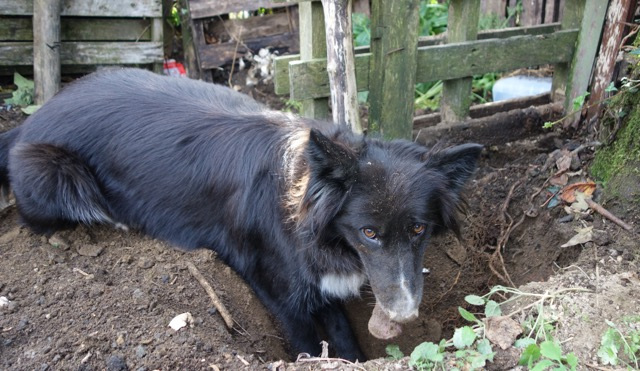
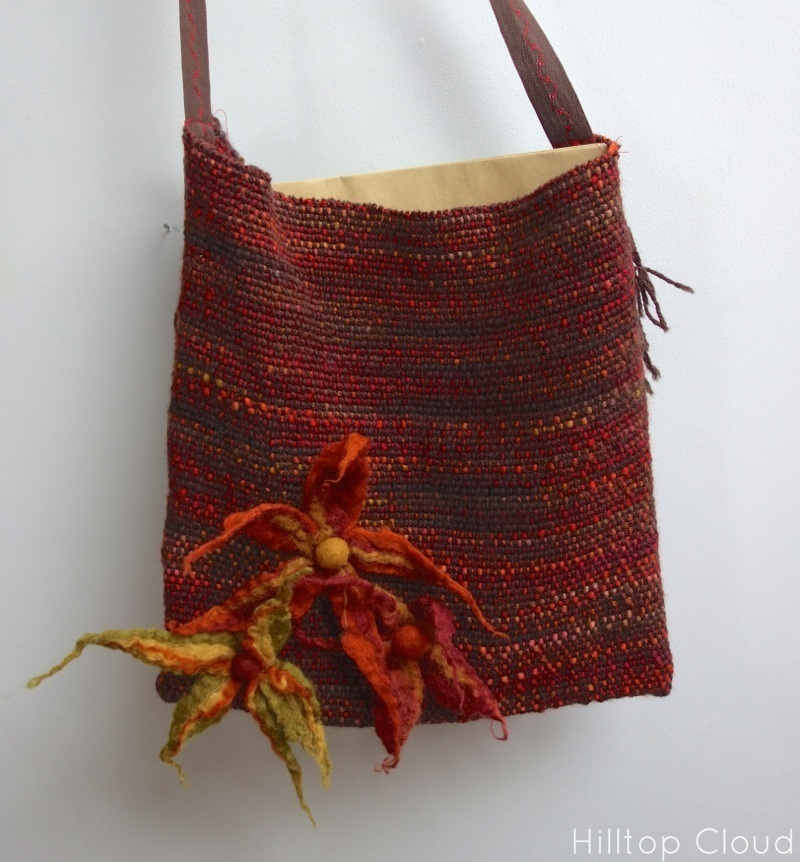
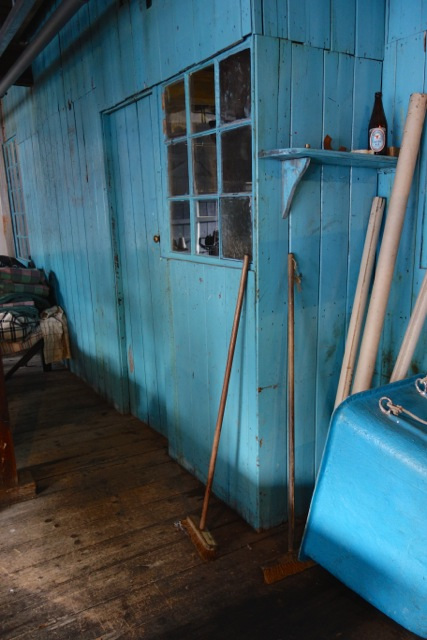
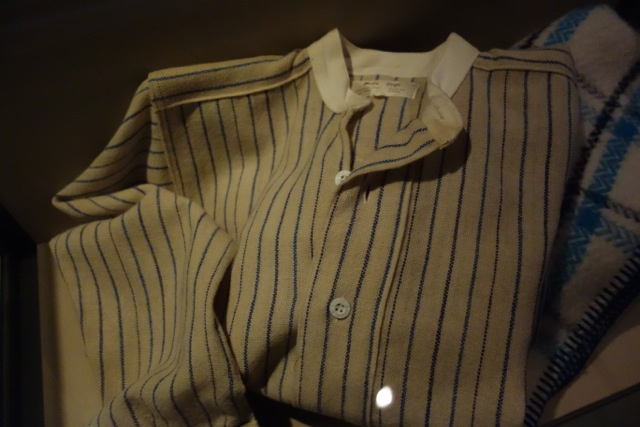
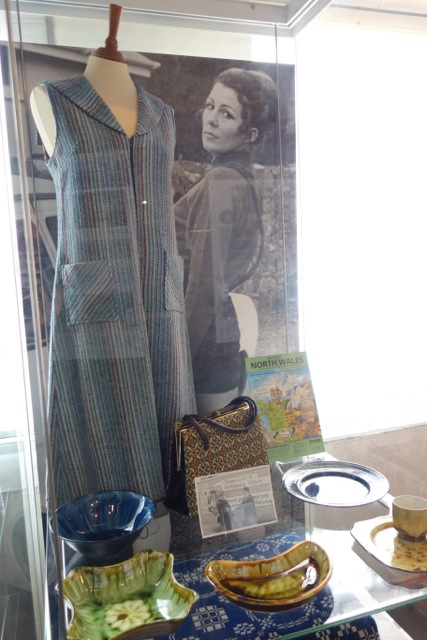
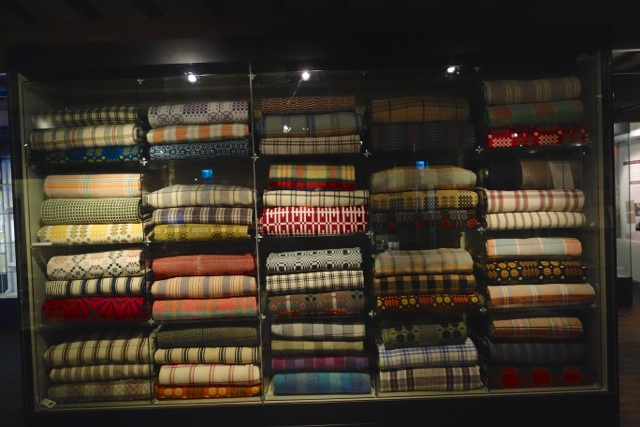
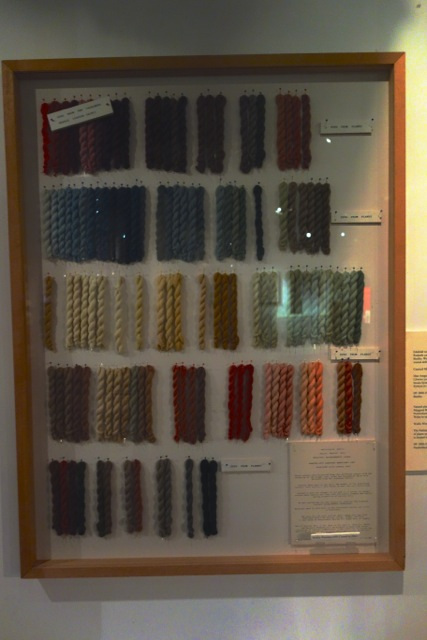
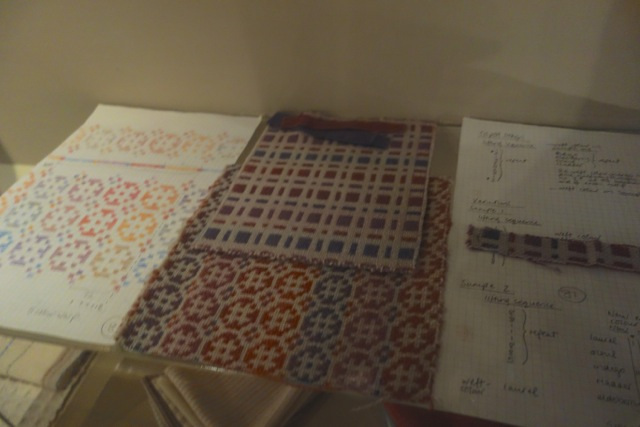
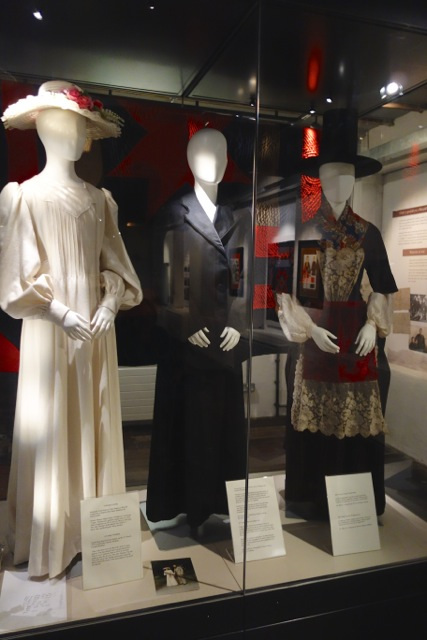
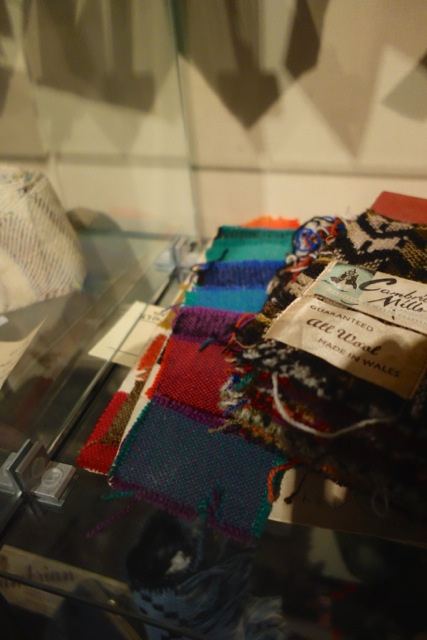
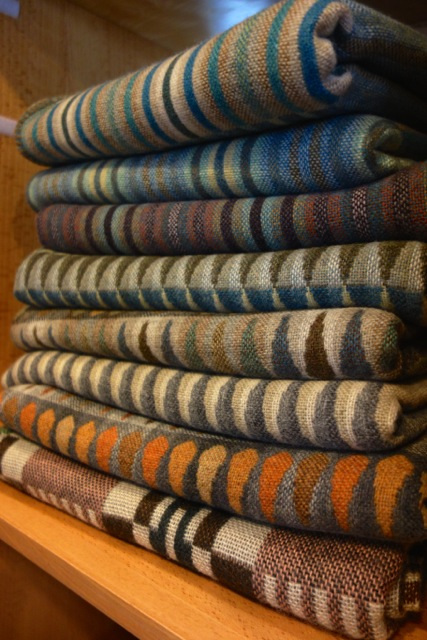
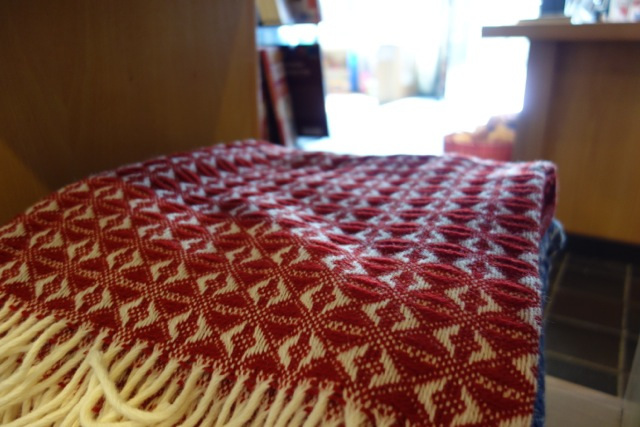
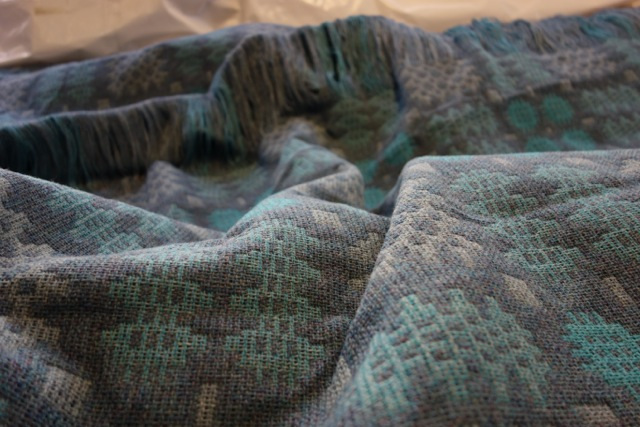
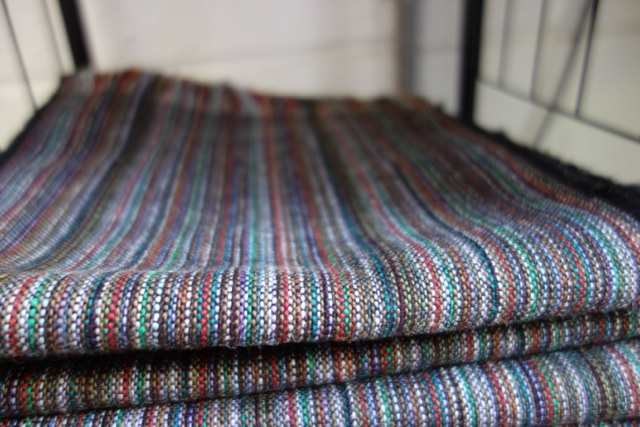
 RSS Feed
RSS Feed


